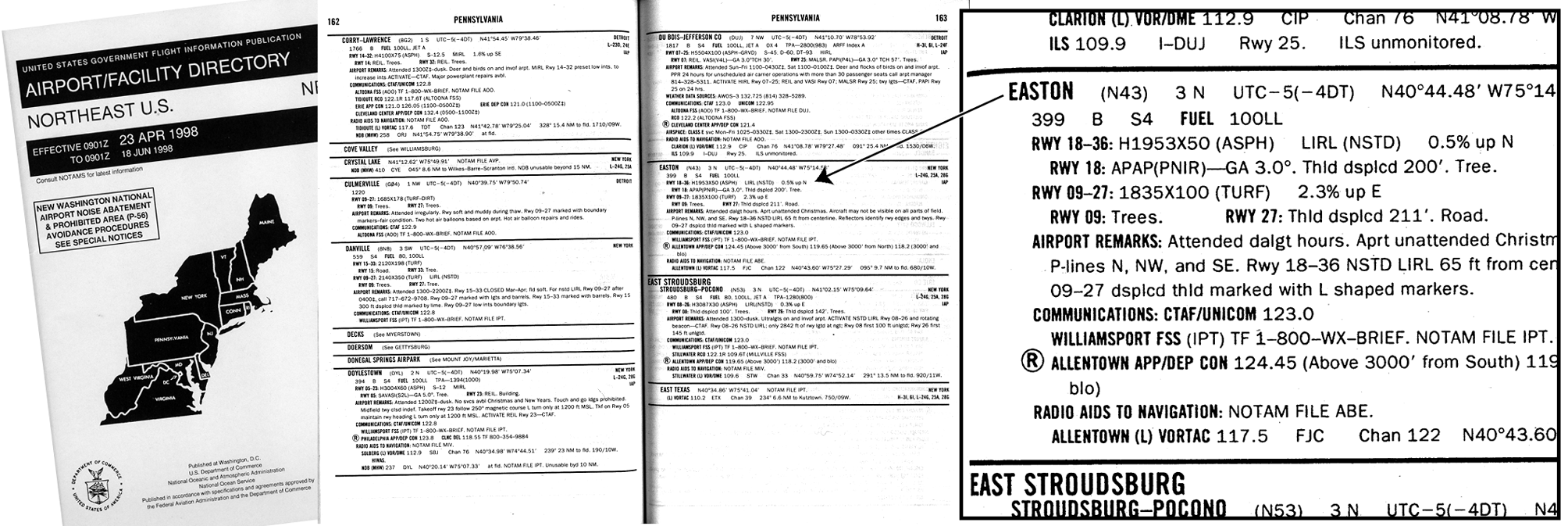Last week, we released the 12th edition of one of our keystone textbooks: The Complete Private Pilot. This week we’ll be covering procedures, and today we’ll introduce the Airport/Facility Directory (A/FD). Here’s what Bob Gardner has to say about it in the latest edition of The Complete Private Pilot.

Before setting off on a cross-country flight, you are required to become familiar with all available information regarding the flight, and the A/FD is your source of information on the destination airport and any others along the route you may decide to visit. Aeronautical charts show the elevation, runway length, and limited radio frequency information for an airport, but only in the Airport/Facility Directory will you learn that the runway is gravel, 75 feet wide, with trees on the west, and that it slopes upward to the north. The legend for individual airport listings is provided in Appendix C of this text. In addition to the individual airport listings, the A/FD contains:
- Special notices in regard to airports listed
- FSS and National Weather Service telephone numbers
- Frequencies of Air Route Traffic Control Centers
- FAA General Aviation District Office telephone numbers
- VOR receiver check points
- Parachute jumping areas
- Aeronautical Chart Bulletin (contains information about obstacles and hazards that have been noted since the last chart was printed and which will be included in the next printing)
- Location of Enroute Flight Advisory Stations (Flight Watch)
- Airport diagrams for all public airports; detailed airport diagrams for large airports; airport diagrams are also available at www.aeronav.faa.gov
- VFR GPS waypoints
The Airport/Facility Directory is published in seven volumes depending on geographic location and is revised every 56 days.
An online version is available by going to www.aeronav.faa.gov and clicking on “Free Digital Products” in the left column. The resulting page offers a number of valuable AeroNav products in addition to the A/FD. The A/FD and its online counterpart are the only official sources of airport information; do not rely on commercial publications.
Appendix C reprints the A/FD Legend. Read it thoroughly. An amazing number of “Where does it say…?” or “where can I find out?” questions can be answered by reading the Legend. This is especially true of communications questions. The ability to interpret the airport listings is only part of what you need to know.
Much of the information contained in the A/FD (but not the Aeronautical Chart Bulletin) can be found at www.airnav.com, www.landings.com, www.runwayfinder.com or www.1800wxbrief.com.




